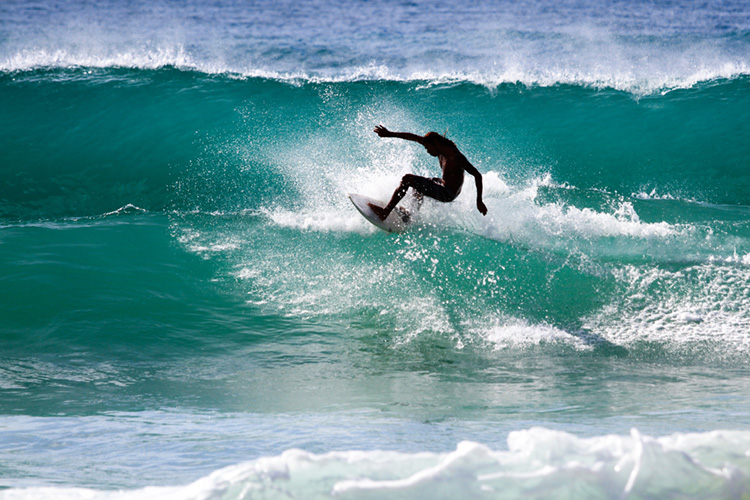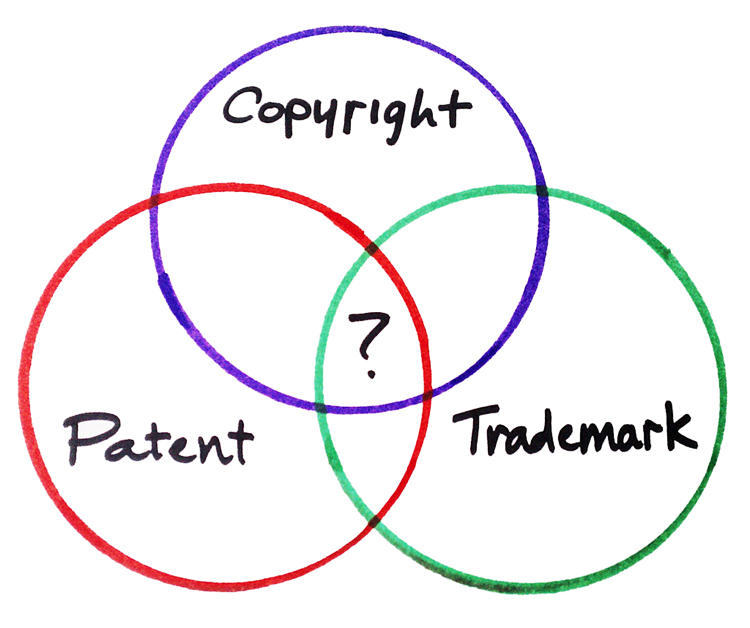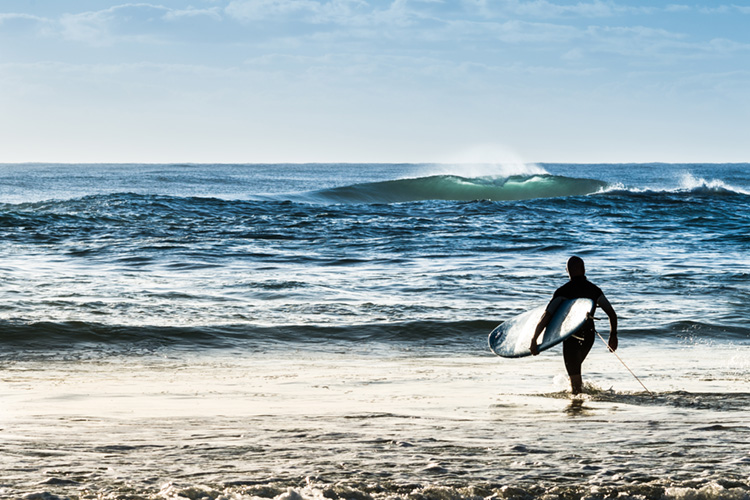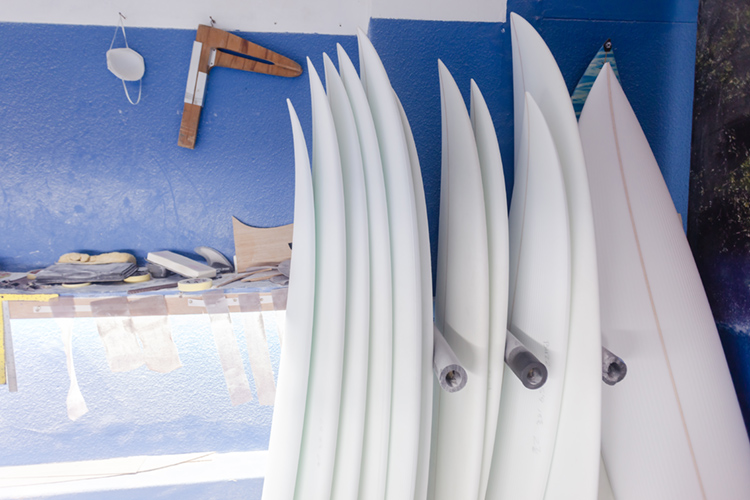While surfing is a significant part of modern life, it's important to recognize that our modern idea of the surfboard and the entire lifestyle that surfing created took time to develop. Intellectual property (IP) law played a part in this process.
The surfboard was invented in ancient Hawaii and began to spread to the rest of the world in the eighteenth century.
These early Hawaiian prototypes were designed out of wood from local trees. They were often over 15 feet in length and could weigh upwards of 77 pounds.
Unlike today's surfboards, these early boards were not designed for surfing across a wave - they only went straight.
Major innovations in the 20th century led to what would become our modern conception of the surfboard.
Over the years, these innovations included adding one or more fins, improvements in materials, and changes in the shape design.
In 1926, Tom Blake invented the very first hollow surfboard, then later became the first to patent the fin when he attached a fixed keel fin from a speedboat to the tail of his board.
In 1970, Mark Richards invented the twin fin setup.
Innovation continued to ride the wave from there, and surfing became one of the most popular aquatic sports in the world.
Simply taking a look at the variety of issued surfboard patents provides insight into the varied ways that inventors have improved the surfboard throughout the years.
This story of surfboard innovation paints an accurate picture of how patents can be used - to build upon existing prototypes by adding necessary improvements.
Other forms of IP law are now crucial to protect the innovations that arose out of the sport, industry, and lifestyle that surfing has become.

Types of Intellectual Property Protection
Three key types of enforceable protections in the field of IP Law are patents, trademarks, and copyrights.
Patents grant an exclusive right, for up to twenty years, over the invention described in the issued patent claim.
A key aspect that distinguishes patents is that the published patent documentation must enable a consumer of ordinary skill to make and use the invention.
A trademark is a word, name, logo, symbol, device, or any combination thereof that can be used as a method of identification for goods or services.
Trademarks allow prospective customers to weigh the reputation of the producer of the goods or provider of the services they seek to purchase.
Copyrights protect original artistic works, such as literature, music, films, software, and architecture.
They grant their authors the exclusive right to reproduce and distribute copies, prepare derivative works, as well as perform or display the work publicly.
Copyright authors do not need to register their work to obtain the initial copyright, as they develop under common law.
Still, they are federally registered to enforce against infringement.

IP Protection and Surfing
Patents
There are three types of patents: utility, design, and plant. Innovations in the field of surfing can be protected under both utility and design patents.
Generally, a "utility patent" protects the way an article is used and works (35 U.S.C. 101), while a "design patent" protects the way an article looks (35 U.S.C. 171).
The most common types of patents are utility patents. They are among the most valuable forms of intellectual property protection an inventor can obtain.
"It would be hard to get a patent on an entire surfboard itself because that would not likely be seen as new or novel," says JD Houvener, USPTO Licensed Patent Attorney with Bold Patents.
"To be eligible for a utility patent, an invention has to be the first of its kind. An incremental change is more likely to be seen as groundbreaking."
"For example, a feature to increase efficiency - like a different fin orientation or new aerodynamic angle - would be seen as a novel improvement that is likely patent-eligible," states Houvener.
A few surfboard-related items that have been patented as items of utility are a securing mechanism for a fin, a method of fabricating a more flexible type of board, an outrigger system for a stand-up paddleboard, etc.
What all these iterations have in common is that they provide an inventive step that adds a new type of value, efficiency, or usage to the surfboard.
Design patents can be used to protect merely aesthetic developments, such as a new design on the front of the board, a new style of riding, or a new shape for a piece of board wax.
Today, there is a huge demand for improvements in the surfboard market, with more people seeking ways to make the sport accessible to them.
If you have a great idea for an improvement that could make surfing products more efficient, automatic, or easy, you should look into protecting your idea under a utility patent.

Trademarks
Trademarks are crucial in an industry as popular as surfing because there are so many different types of users and so many different companies competing to meet the diversity of demands.
Trademarks are the way in which these companies signal their products and brands to consumers when they go out to purchase a new board, wetsuit, surf watch, etc.
Each commercial surfboard itself has a company that makes, manufactures, and retails the board. That will be the prominent name featured on the board.
Then, there might be other features and accessories on the board - such as the wristband attachment or the fin - that might come from a different manufacturer with a different brand.
These parts would then be co-branded under the whole assembly.
If you are an avid surfer and purchase many surfboards or gear, be on the lookout for counterfeit products shipped from overseas that copycats are trying to pass off as original.
By the same token, if you seek to make your own surf equipment, trademark it, so you are the only one to have the right to manufacture and commercialize it.

Copyrights
Copyrights protect designs and artistic properties.
Surfboard models and lifestyle accessories contain several aspects that can be protected under copyright law, such as the pattern on the board, the material for the wetsuit, or any brand-associated image on a piece of gear.
However, the act of surfing, when it relates to competing and leisure riding, has a great deal of association with copyright law.
The first major association relates to sponsorship. When a brand sponsors surfers in competitions, they will often give riders gear to wear when training or racing.
The imagery, designs, and unique elements of the clothing/gear that sponsored athletes wear are protectable under both copyrights and trademarks.
The second key IP law involvement, especially in our digital age, regards artistic content that surfers create and publish.
If surfers are independently capturing themselves surfing on a GoPro, making an instructional video, or designing their own board, they are creating art.
These art forms are protectable under copyright law.
Copyrights are immediately effective upon creation under common law - this means that as soon as you publish to an audience, no one else is allowed to copy or produce your work without your permission.
Next time you're in the store looking at the array of surf products or out on the water, take a look at the brands displayed on each specific component to appreciate the harmony between unique products and how far the sport of surfing has come.
Be sure to protect your GoPro footage or your unique surfboard design if you intend for it to be your sole intellectual property.
In addition, be on the lookout for products that may seem counterfeit, and alert companies if you feel that their brands or designs are being infringed upon.
Words by Carly Klein | Law Student at Loyola Law School in Los Angeles
A graduate of Boston University with a B.A. in Political Science and Philosophy, she has experience in marketing, communications, and sales.
She is a Los Angeles native and seeks to pursue a career in IP and Business Litigation.
